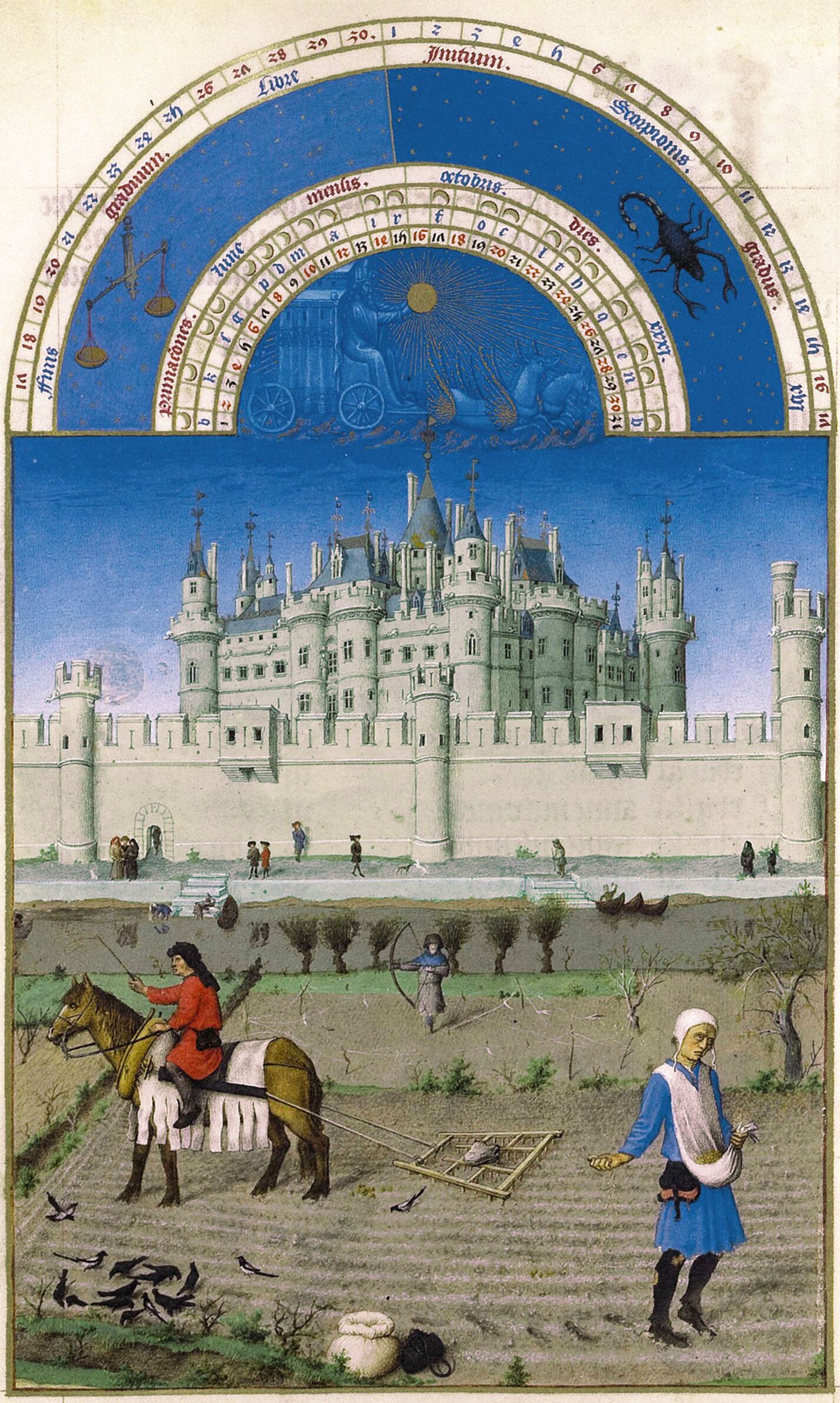The chariot of the Sun passes from Libra to Scorpio. A peasant on ahorse harrows the land (the harrow is weighed down with a heavy stone). Another is sowing. His seeds, in the pouch of his apron, have atracted the attention of crows and magpies (the birds are totally unimpressed by the scarecrow bending its bow). In the foreground we see a sack of seeds and a keg or cask. The marked attention paid to the cast shadows and the reflections on the water, footprints, the detailed rendering of the cords strung from post to post to ward off birds, and even the excrement oof the horse, all indicate the hand of Barthélemy d'Eyck. On the other side of the Seine, behind the walls crowned by towers and fortifications, stands the Louvre fortress with pennants bearing the royal insignia. The castle, restored by order of Charles V by the architect, Raymond du Temple, is viewed from one side. We note "the corner tower on the side of St Thomas" to the south-west, and the twin turrets of the Grande Porte facing the Seine, adorned, by order of Charles VII, with the statues of kings. Then we have the tower of the Grande Chapelle, the twin turrets of the narrow eastern gate and the tower of the Taillerie to the north-east. Lastly, we have the centrally positioned larger tower, or Grosse Tour, symbol of the regal power behind all the fiefs of the crown. The original drawing of the castle appears, once more, to be the work of the Limbourgs, as indicated by the small, contorted gargoyles or gargouille elements adorning the cornices. Gentlemen walk along the riverbank. While their clothing is that of the 1440's, we find in the middle a gentleman in black, and in the manner prevailing at the time of Barthélemy. Women beat their washing on the steps as boats approach.
